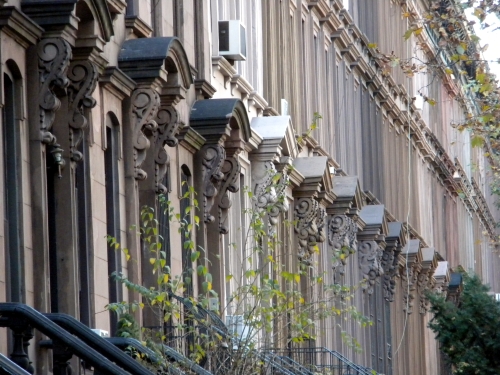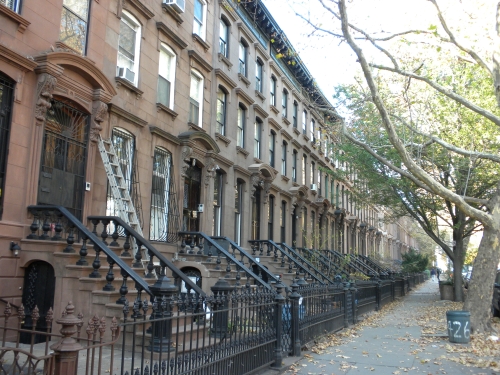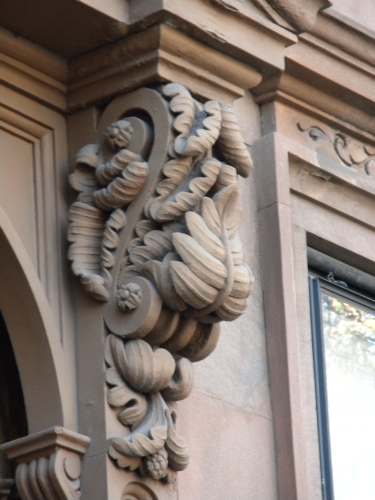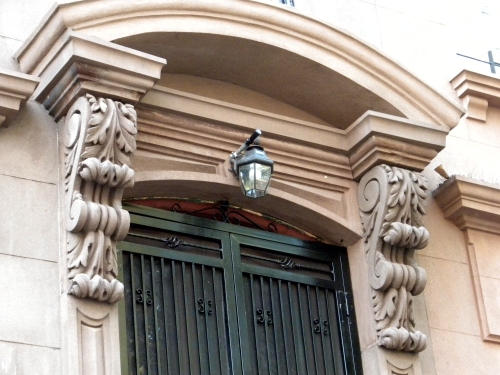Building of the Day: 376-432 Vanderbilt Avenue
Brooklyn, one building at a time. Name: Rowhouses Address: 376-432 Vanderbilt Avenue Cross Streets: Gates and Greene Avenues Neighborhood: Fort Greene Year Built: between 1872-1879 Architectural Style: Italianate, and Italianate/Neo-Grec Architect and Builder: Thomas B. Jackson Landmarked: Yes, part of Fort Greene HD (1978) The story: In honor of Charles Lockwood, who passed away this…

Brooklyn, one building at a time.
Name: Rowhouses
Address: 376-432 Vanderbilt Avenue
Cross Streets: Gates and Greene Avenues
Neighborhood: Fort Greene
Year Built: between 1872-1879
Architectural Style: Italianate, and Italianate/Neo-Grec
Architect and Builder: Thomas B. Jackson
Landmarked: Yes, part of Fort Greene HD (1978)
The story: In honor of Charles Lockwood, who passed away this weekend, today’s BOTD is an entire block of brownstones, the kind of buildings that Mr. Lockwood introduced to us all, in his book Bricks and Brownstone: the New York Row House, 1783-1929. These are the kinds of buildings that cause everyone everywhere, to refer to all rowhouses as “brownstones”: the Italianate row house. This particular group is very well preserved, and showcases all the best of what this kind of housing represents. We know who built them, too, which is often pretty rare, especially in the earlier speculative housing of our borough, for which records can be pretty spare, to say the least.
Architect and builder Thomas B. Jackson designed and built this entire side of the street, with the exception of the corner houses. That is close to 60 houses, all built to house the growing number of comfortable middle class people who were pouring into Fort Greene in the decade after the Civil War. Merchants, skilled craftsmen, like jewelers and watchmakers, book dealers, lawyers, tailors and widows with income, all bought these houses and made this neighborhood home.
The houses themselves were built in groups, and as you walk down the street, especially if you are on the eastern side, you can see the slight differences in height, ornamentation, and other small details. Some houses are pure Italianate, others a hybrid of Italianate, and the later style Neo-Grec, which was gaining popularity towards the end of the 1870’s.
As Charles Lockwood tells us in his book, these rowhouses were not built to be seen individually, but as a unified row. The eye is drawn down the block, most ideally at an angle, drawn to the symmetry of tall stoops, doorways, windows frames, and cornices, all the way down the block, as if to a distant horizon. It really is quite beautiful, and Brooklyn’s brownstone blocks are among the finest examples of this kind of architecture to be found in the city. This block of Vanderbilt is among the finest block of Italianates in Brooklyn.
At a time when rowhouses were seen as nothing more than potential tear-downs, or at best, student or low income housing that was not really desirable to anyone with means; the brownstone movement was building, proving “them” wrong. Charles Lockwood’s book was a validation of that movement, a scholarly tome providing historic backup to what old house lovers had been saying all along. Perhaps we would have gotten there without his expertise, or his writing, and someone else probably would have come along with a similar book sooner or later. But it was his moment, way back in 1972, and his book, that would have a prominent place in many a brownstoner’s bookshelf. Those bookshelves could even be in some of these fine houses on Vanderbilt Avenue, great examples of what you can do with a pile of brick and brownstone. Thank you, Charles Lockwood! GMAP








Is it possible that Thomas B. Jackson is a different architect than Thomas R. Jackson, designer of the Tammany Hall clubhouse on 14th Street in The Other Borough?